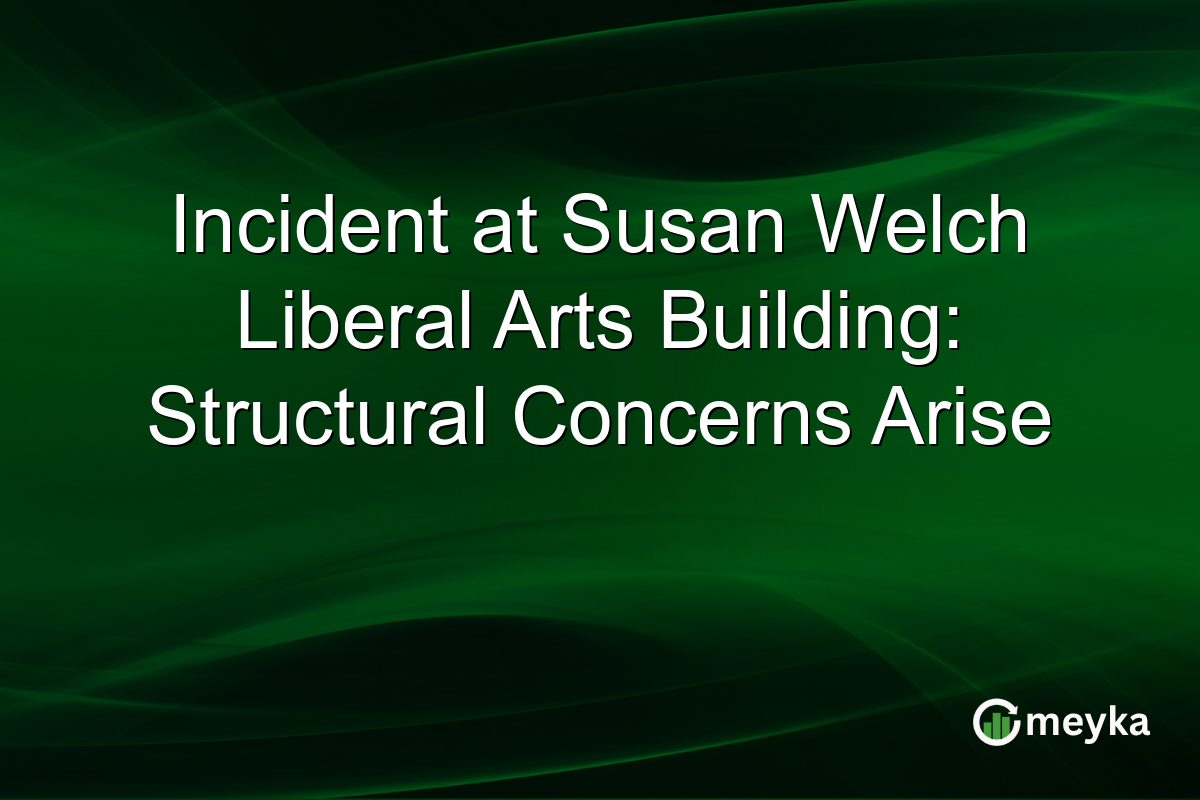Incident at Susan Welch Liberal Arts Building: Structural Concerns Arise
Recently, the Susan Welch Liberal Arts Building at Penn State made headlines due to a structural incident that prompted an evacuation. A crack in a wall and a floor displacement raised significant safety concerns. As a newly opened facility, this incident underlines the critical need for rigorous building safety inspections. In this article, we explore what happened, the response by the university, and steps needed to ensure future safety.
Structural Challenges at Susan Welch Building
The Susan Welch Building incident involved visible structural issues, most notably a crack in the wall and visible floor displacement. These problems were significant enough to initiate a full evacuation of the building. Such structural anomalies can compromise the integrity of the building, posing risks to occupants.
The building, a part of Penn State’s ambitious expansion efforts, opened only recently. This raises questions about whether these issues were pre-existing or developed post-construction. Thus, frequent inspections and maintenance checks are crucial in preventing similar incidents across other campus facilities. Read more on Penn State evacuation and response.
University’s Emergency Response
Penn State’s emergency response to the Susan Welch Building incident was immediate and structured. Evacuating the building ensured safety, though operations in nearby areas continued with heightened precautions.
Emergency services were alerted swiftly to assess the situation. This prompt action highlights the university’s preparedness in handling potential crises. Additionally, the incident management underscores the need for robust emergency protocols in educational institutions, ensuring student and faculty safety remains paramount.
Addressing Building Safety: A Crucial Priority
The structural concerns in the Susan Welch Building stress the importance of thorough building inspections. With Penn State’s ongoing expansion, ensuring the integrity and safety of new constructions is non-negotiable.
Regular safety audits and adherence to updated building codes could stave off potential hazards. Techniques for early detection of such issues can save resources and protect lives. Institutions must prioritize not only the aesthetic and functional aspects of new buildings but also long-term safety and resilience against structural failures. For the full local coverage, explore more details.
Final Thoughts
The Susan Welch Building incident at Penn State serves as a stark reminder of the importance of structural integrity and regular safety checks. This event demonstrates that no facility, regardless of its age or design prestige, is immune to potential issues. Prioritizing rigorous inspection protocols is essential to safeguarding occupants and ensuring the longevity of university infrastructures. Moving forward, Penn State, along with educational institutions nationwide, should enhance their focus on preventive measures. Maintaining up-to-date safety measures not only protects physical infrastructures but also reinforces trust in university facilities.
FAQs
The evacuation was prompted by structural concerns, specifically a crack in the wall and floor displacement at the Susan Welch Liberal Arts Building at Penn State.
Penn State initiated an immediate evacuation and called in emergency services to assess the situation, ensuring the safety of all occupants and surrounding areas.
Regular structural inspections help identify and mitigate potential hazards, ensuring the safety and integrity of university buildings, especially in new constructions like the Susan Welch Building.
Disclaimer:
The content shared by Meyka AI PTY LTD is solely for research and informational purposes. Meyka is not a financial advisory service, and the information provided should not be considered investment or trading advice.






